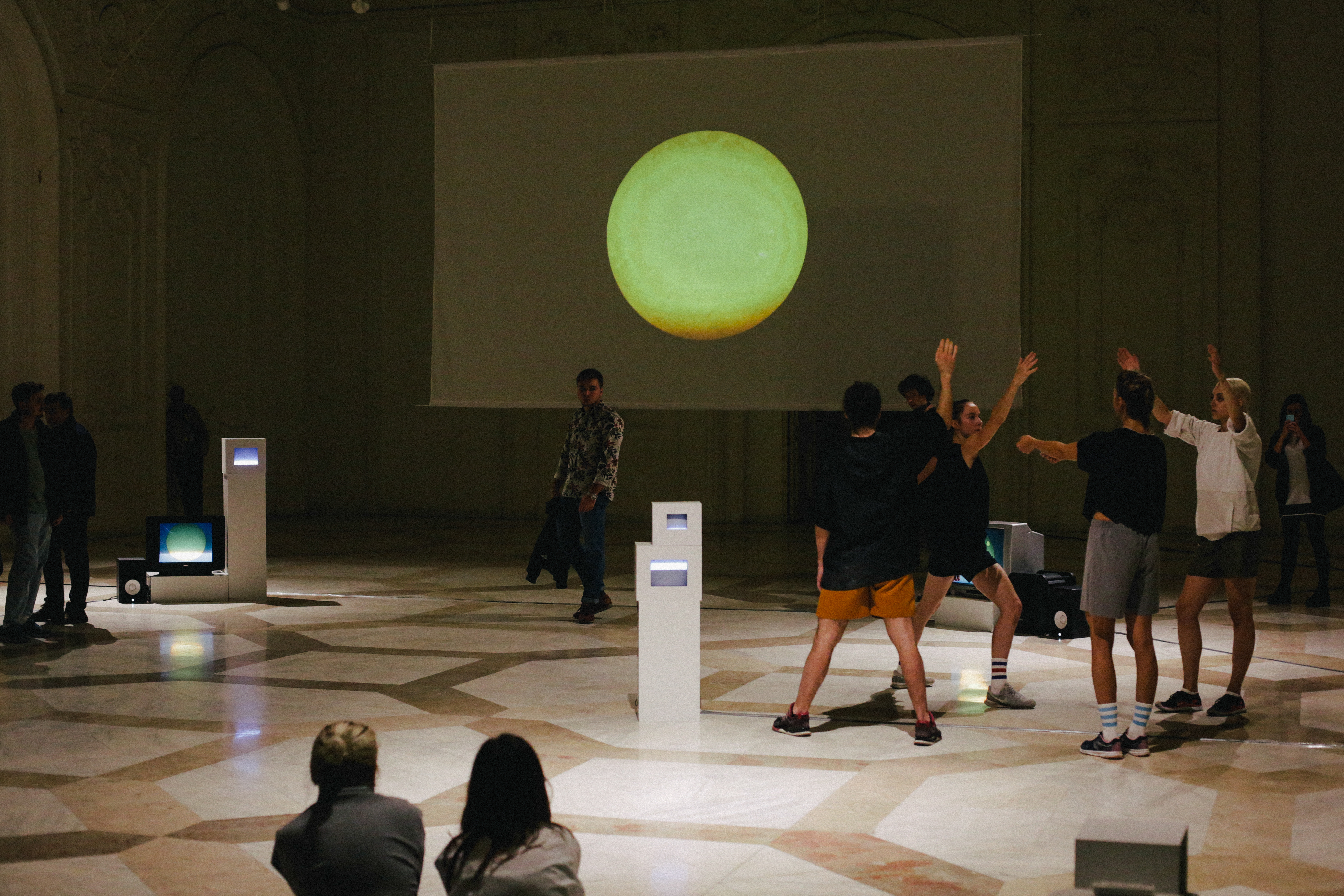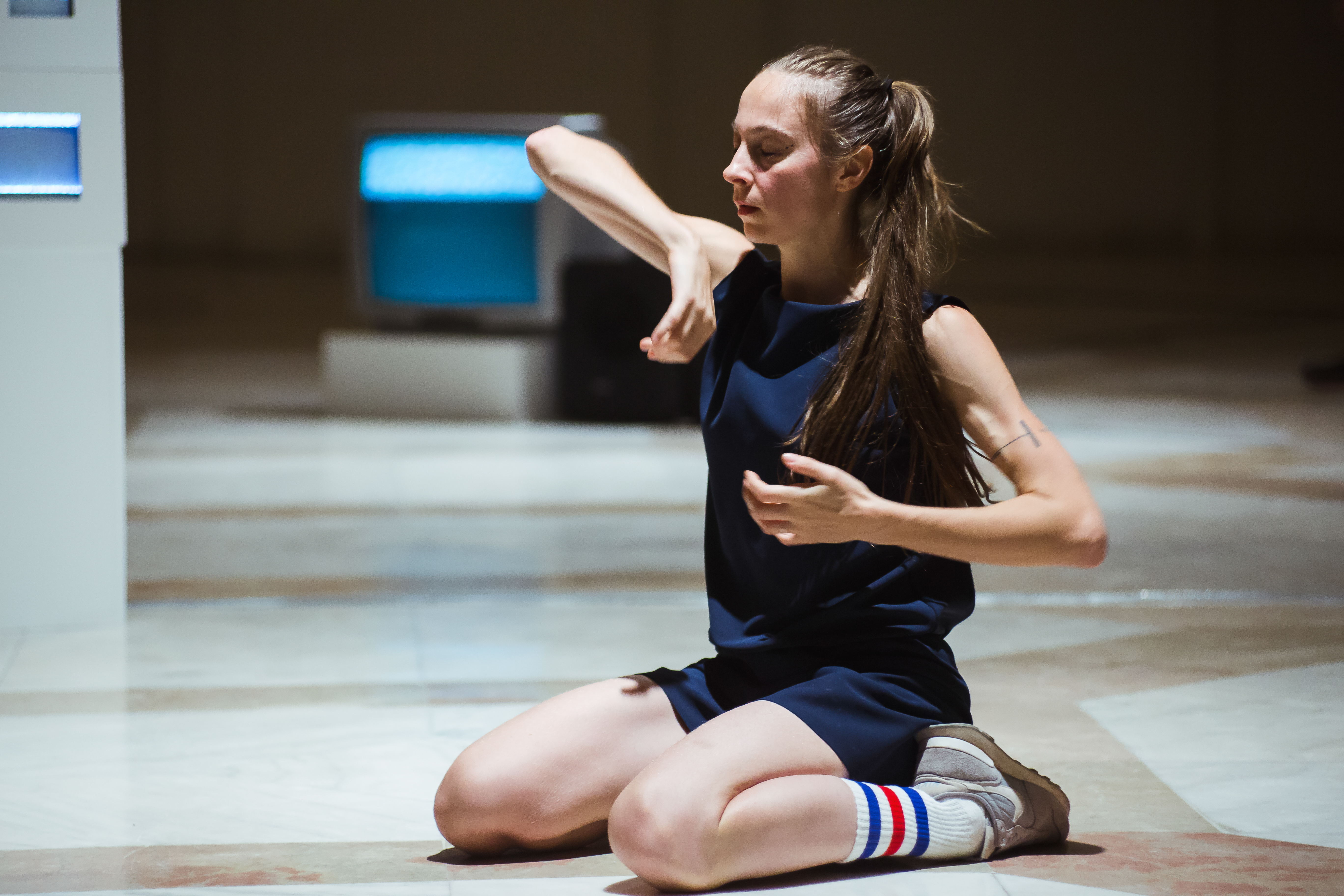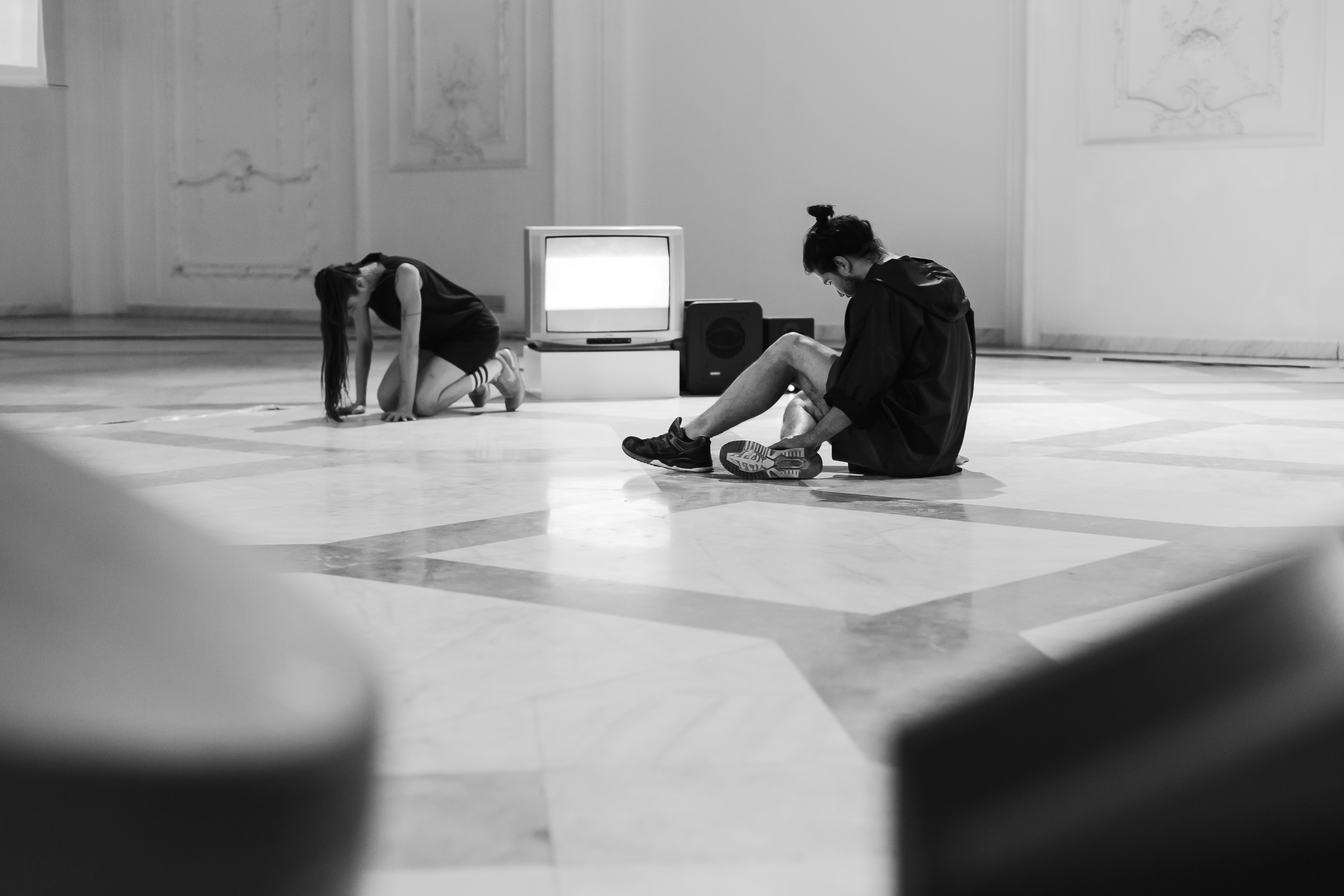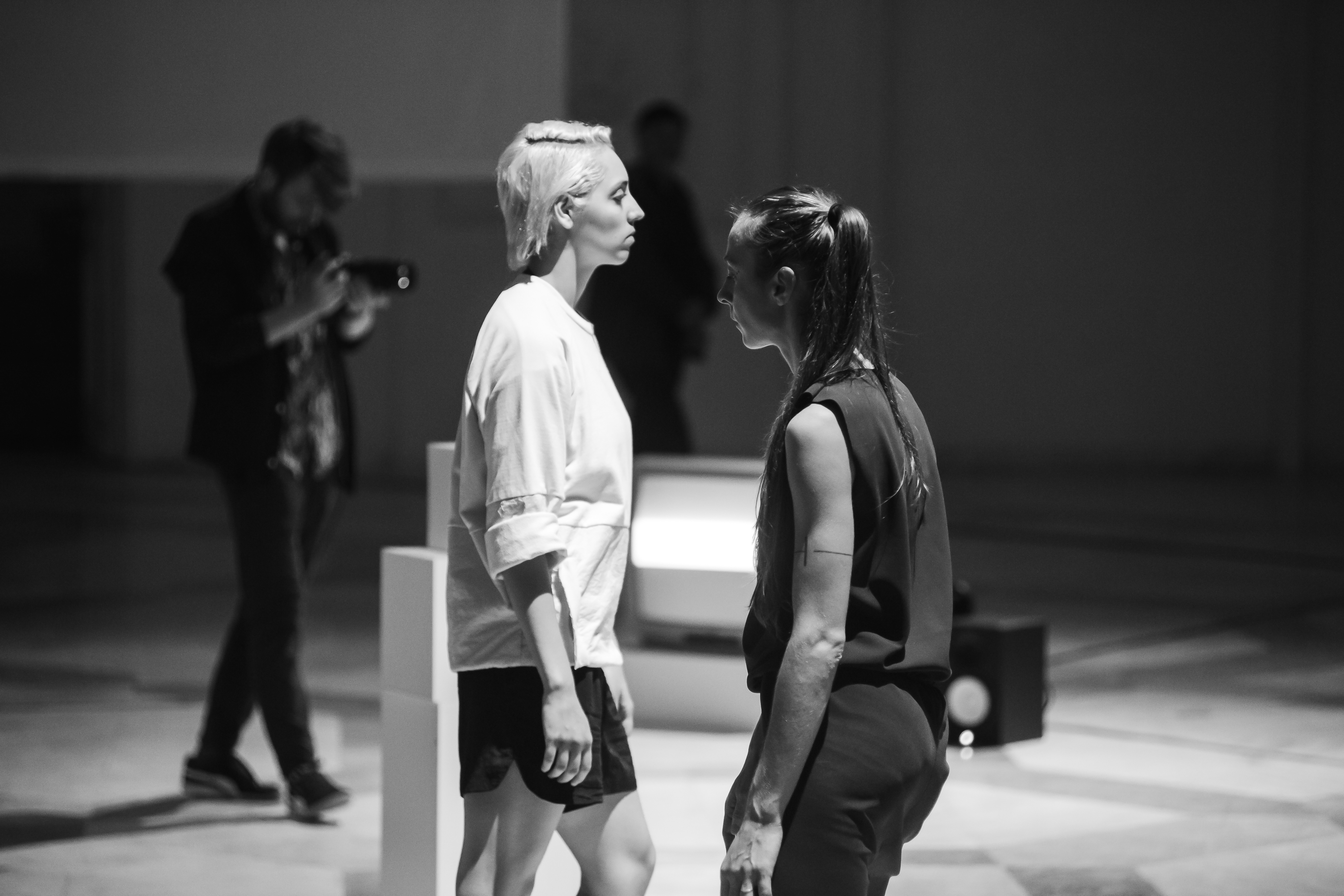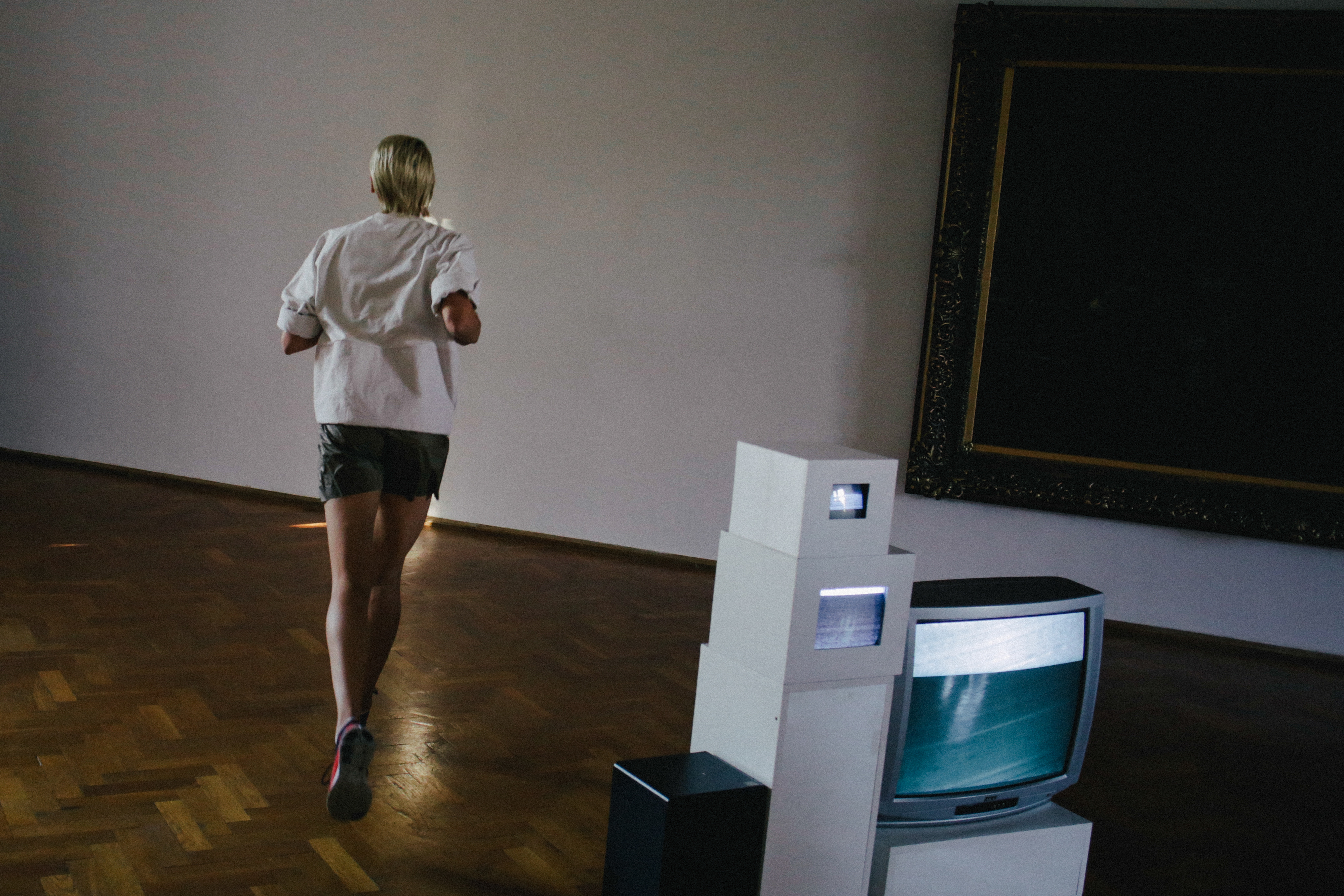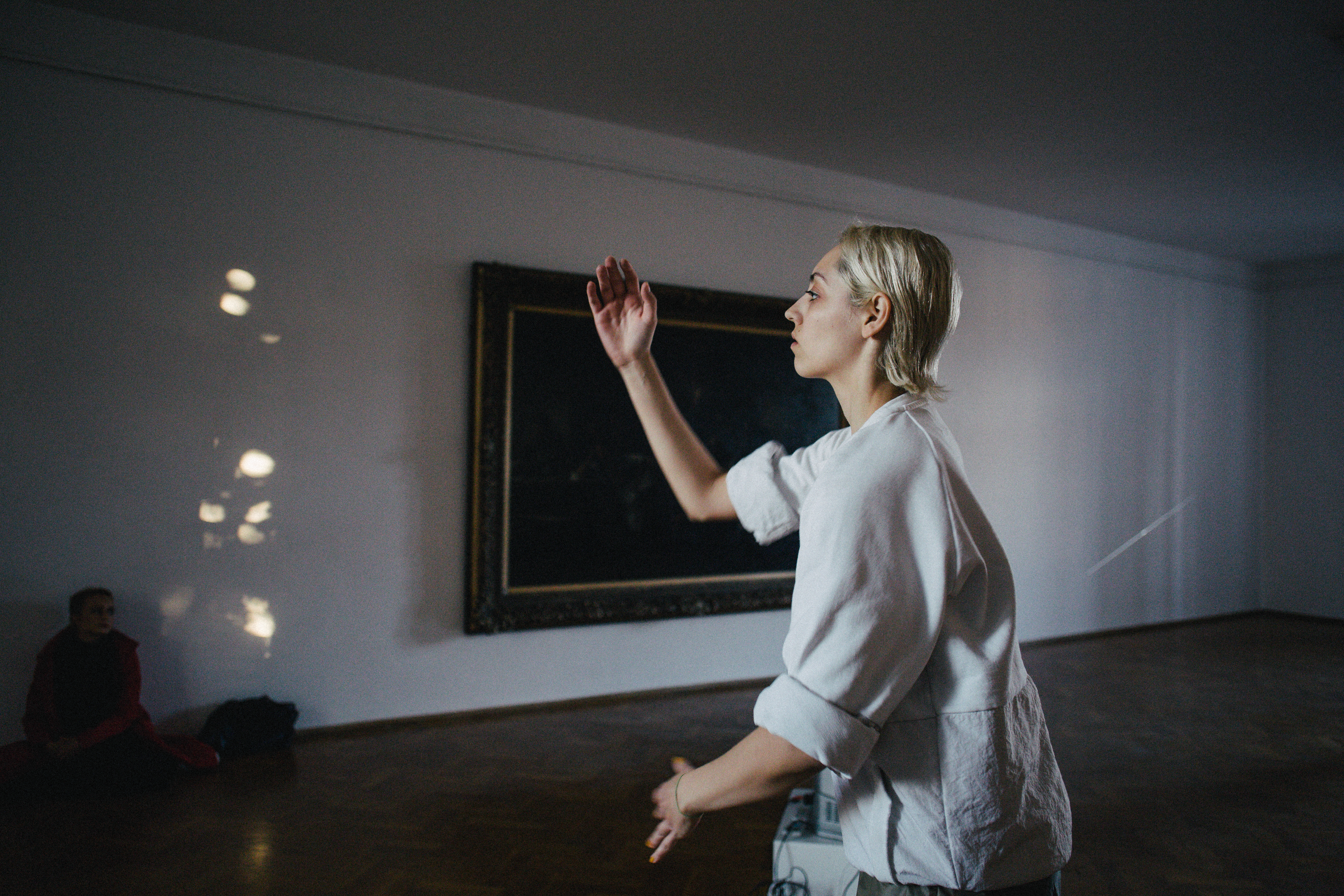An immersive and participatory experience, Retro Walk Decades to the Sun is looking to create a new way of relating to the public, who is placed amidst an information-saturated environment, built through contamination. Space becomes variable and fluid. Objects and bodies lose their location and become intentions. Images reflect fragments of macro and micro-realities, creating an illusion that experience, a psychological immersion, is not mediated. Retro Walk Decades to the Sun is a durational performative installation that investigates the ways in which a segment of quantum physics can be applied to the human body, stressing the theory of non-locality (the ability of particles with the same origin to know instantaneously and reciprocally their quantum states, even when they are separate in space).
We exist in a 3D space, building in this Euclidian environment coherent models of understanding and acting. This is a generalization describing the position, shape, dimension, and direction of the objects around us and represented until the beginning of the 20th Century the only philosophical model to comprehend nature. Nevertheless, this model begins step by step to be deconstructed, the concept of space-time (as a mathematical model combining three dimensions of space with one dimension of time in a continuum), described by Hermann Minkowski and later interpreted by Einstein, sends us sequentially towards questioning perceived reality.
If in the 1960s, doctors Hans Helmut Kornhuber and Luder Deecke discovered “Bereitschaftspotential” (BP), the so-called “pre-engine potential”, which is the measurement of the motor cortex and other brain activity stimulating movement. A series of experiments carried out in 1985 by Benjamin Libet proved that BP precedes the conscious decision to perform a spontaneous act, suggesting that there is an unconscious neuronal process preceding and even causing the wilful acts, being felt as consciously motivated by a person. There seems to be an unconscious impulse that comes before our conscious decision to move. In other words, before you make the decision to move your hand, a part of the brain has already begun to feel the movement.



